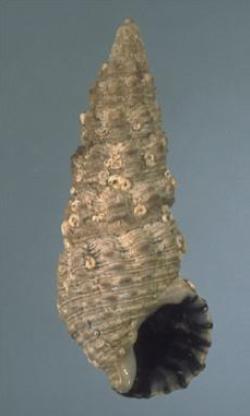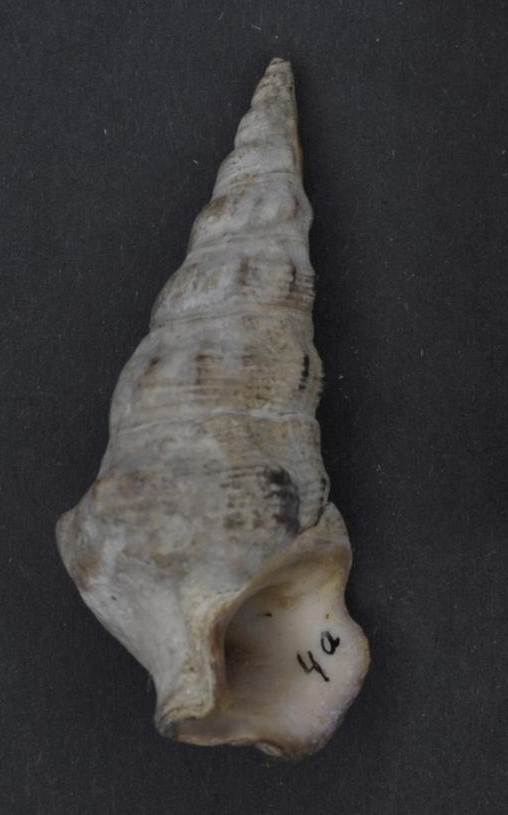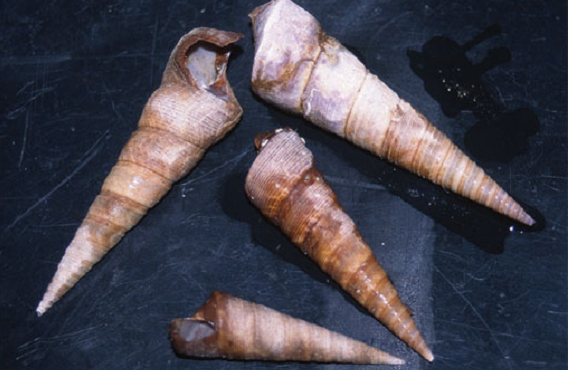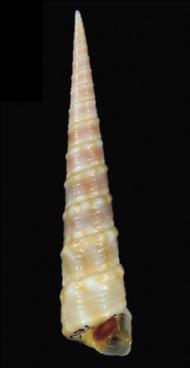 Mud whelk (Velacumantus australis)
Mud whelk (Velacumantus australis)
Key features:
- Broader, rough spiralled shell
- Up to 2-5cm long
- Dull grey colour
Habitat:
- Soft sediments in sheltered waters, estuaries, mangroves, tidal flats, seagrasses
Hercules club whelk (Pyrazus ebeninus)
Key features:
- Up to 11cm long
- Dark brown shell with flaring lip
Habitat:
- Mudflats and mangrove swamps in esturies
 key features:
key features: Native screw shell (Gazameda gunnii)
Native screw shell (Gazameda gunnii)